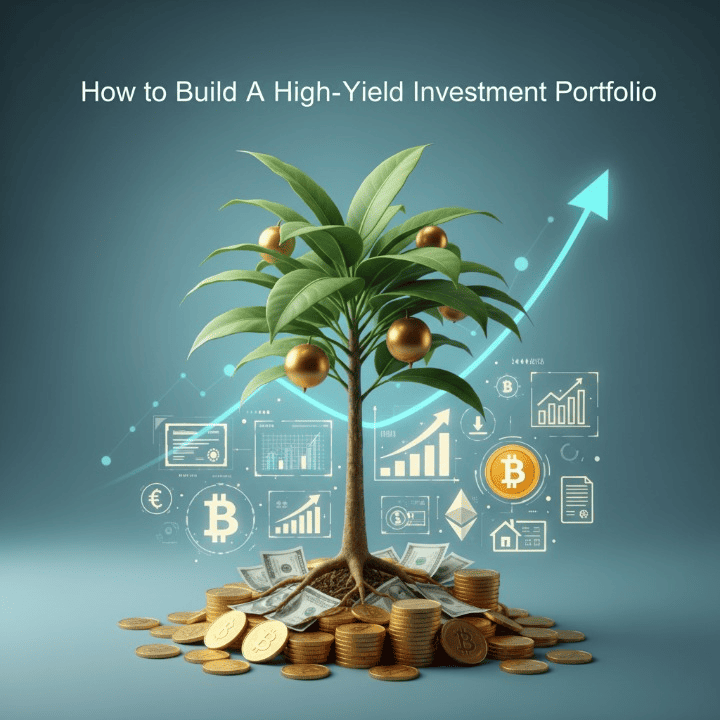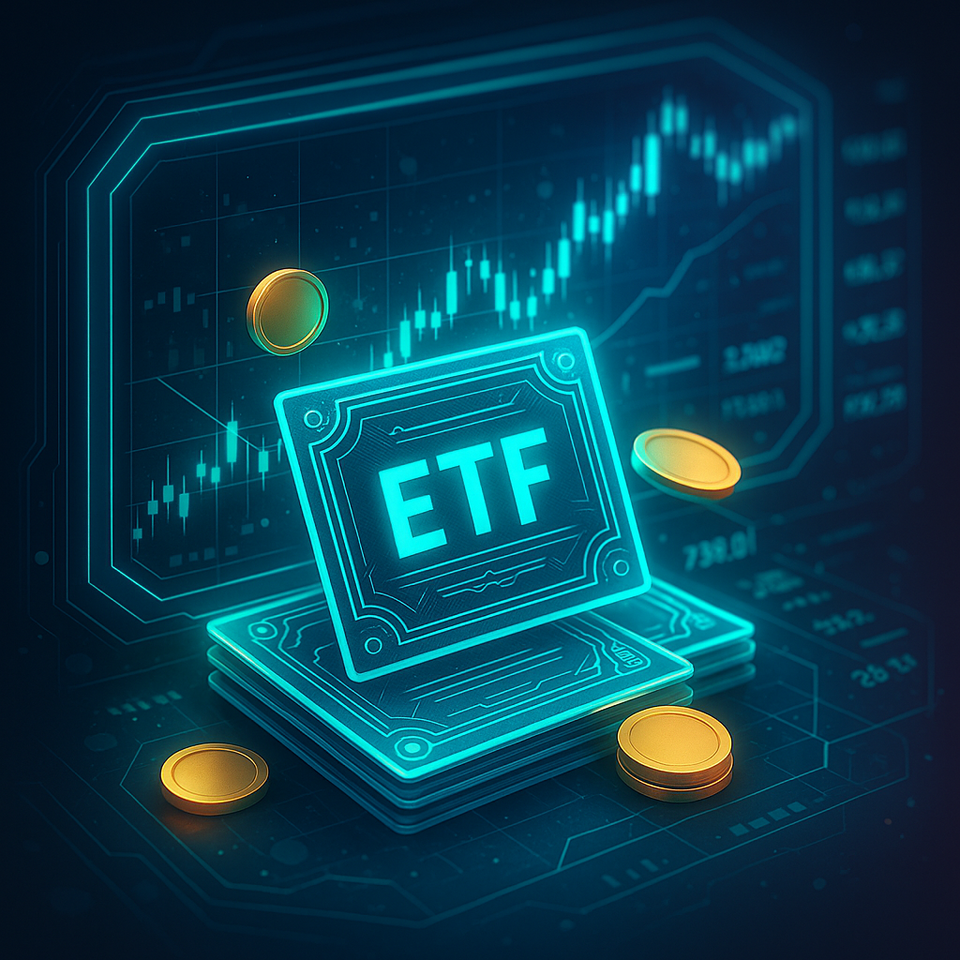
Introduction
Many investors seek ways to maximize their returns. Building a high-yield investment portfolio can seem complex. It involves understanding various asset classes. The goal is to generate substantial income. This strategy requires careful planning and research. It also demands a clear understanding of associated risks. This guide will explore effective methods. We will cover traditional and modern approaches. Our aim is to help you create a robust portfolio. Such a portfolio can provide significant returns over time. It is vital to make informed decisions. This approach supports your financial aspirations. A well-constructed portfolio is key. It ensures steady income and potential growth. Understanding market dynamics is crucial. This helps in navigating investment choices.
Understanding High-Yield Investments
High-yield investments aim to provide above-average returns. These returns often come in the form of income. Examples include dividends or interest payments. However, higher yields usually mean higher risks. Investors must balance income potential with risk tolerance. It is not just about chasing the highest yield. It is about sustainable and stable returns. A thorough understanding of each asset class is vital. This prepares investors for potential market fluctuations.
What are High-Yield Investments?
High-yield investments refer to assets. These assets generate significant income. They often come with greater risk than typical investments. Common examples include:
- Dividend Stocks: Companies share profits with shareholders.
- Real Estate Investment Trusts (REITs): Companies owning income-producing real estate.
- High-Yield Bonds: Bonds from companies with lower credit ratings.
- Peer-to-Peer (P2P) Lending: Lending directly to individuals or businesses.
- Cryptocurrency Staking: Earning rewards by holding crypto in a wallet.
- Preferred Stocks: Hybrid securities offering fixed dividends.
These options offer diverse avenues for income generation. Each comes with its own risk profile. Research is crucial before investing.
The Importance of Risk Assessment
Every investment carries a degree of risk. High-yield investments often carry more. It is essential to assess your personal risk tolerance. This helps in making suitable investment choices. Consider these factors:
- Market Volatility: Prices can fluctuate rapidly.
- Credit Risk: Borrowers might default on payments.
- Liquidity Risk: Difficulty in selling assets quickly.
- Inflation Risk: Rising prices erode purchasing power.
Understanding these risks allows for informed decisions. It helps in building a resilient portfolio. Do not overlook the impact of potential losses.
Diversifying Your High-Yield Portfolio
Diversification is a cornerstone of sound investing. It helps mitigate risks. Spreading investments across different assets is key. This prevents over-reliance on one single investment. A diversified portfolio can withstand market downturns better. It ensures that not all your eggs are in one basket. This strategy is especially critical when building a high-yield investment portfolio. It helps in managing the inherent risks.
Traditional High-Yield Assets
Many traditional assets offer attractive yields. They form the backbone of many income-focused portfolios. Understanding their characteristics is crucial.
Dividend Stocks and REITs
These are popular choices for income investors.
- Dividend Stocks: Companies like utility providers or consumer staples. They often pay consistent dividends. They tend to be more stable. Look for companies with a long history of dividend payments. Assess their financial health and growth prospects.
- Real Estate Investment Trusts (REITs): These companies own or finance income-producing real estate. They must distribute a high percentage of their taxable income. This often leads to attractive dividend yields. REITs can include properties like apartments, malls, or data centers. They offer exposure to real estate without direct ownership.
High-Yield Bonds and Preferred Stocks
These fixed-income instruments provide regular income.
- High-Yield Bonds (Junk Bonds): Issued by companies with lower credit ratings. They offer higher interest rates to compensate for increased risk. These bonds are sensitive to economic conditions. Research the issuer’s financial stability thoroughly.
- Preferred Stocks: A hybrid between stocks and bonds. They pay fixed dividends. Preferred shareholders have priority over common shareholders for dividends. They also have priority in liquidation. However, they typically do not have voting rights.
Exploring Alternative High-Yield Opportunities
Beyond traditional assets, alternative investments can enhance yields. These often come with unique risk profiles.
Cryptocurrency Staking and Yield Farming
The digital asset space offers new income streams.
- Cryptocurrency Staking: Locking up crypto holdings. This supports network operations. In return, investors earn rewards. This is common with Proof-of-Stake blockchains. Examples include Ethereum 2.0 or Cardano. Research the specific crypto and platform carefully. Understand lock-up periods and potential impermanent loss.
- Yield Farming: A more advanced strategy. It involves lending or staking crypto assets. The aim is to generate high returns or “yields.” This often occurs on decentralized finance (DeFi) platforms. It typically involves higher risk and complexity. Smart contract risks and impermanent loss are key considerations.
Peer-to-Peer Lending
P2P lending connects borrowers and lenders directly.
- How it Works: Investors lend money to individuals or small businesses. This bypasses traditional banks. Platforms like LendingClub or Prosper facilitate these loans. Interest rates can be significantly higher than traditional savings accounts.
- Risks: Borrower default is the primary risk. Diversifying across many small loans is crucial. Evaluate the platform’s borrower screening processes. Understand the default rates.
Strategic Asset Allocation for Growth and Income
Effective asset allocation is critical. It involves distributing investments across various asset classes. This depends on your financial goals and risk tolerance. A well-structured allocation balances potential returns with acceptable risk. It is a dynamic process. Regular review and adjustments are necessary. This ensures your portfolio remains aligned with your objectives.
Balancing Risk and Reward
Finding the right balance is key. A high-yield portfolio typically carries more risk.
- Conservative Approach: May prioritize stable dividend stocks. It also includes investment-grade bonds. Lower potential for extreme highs but also fewer lows.
- Moderate Approach: Incorporates a mix. This could include REITs and some high-yield bonds. Perhaps a small allocation to safer crypto staking.
- Aggressive Approach: Might include a larger portion of high-yield bonds. It also includes preferred stocks. Even a higher allocation to select cryptocurrencies or P2P lending. This seeks maximum returns but accepts higher volatility.
Your personal financial situation dictates this balance. Consider your age, income stability, and time horizon.
The Role of Rebalancing
Market movements can shift your asset allocation.
- What is Rebalancing? Adjusting your portfolio periodically. This restores it to your original target allocation. If stocks perform exceptionally well, their percentage might increase. You would sell some stocks and buy other underperforming assets.
- Why Rebalance? It helps manage risk. It also locks in gains. It ensures your portfolio stays aligned with your strategy. Regular rebalancing prevents one asset class from dominating. This maintains proper diversification. It also forces a “buy low, sell high” discipline.
Managing Risks in a High-Yield Portfolio
A high-yield investment portfolio inherently involves risks. Effective risk management is paramount. It protects your capital and ensures sustainable growth. Ignoring risks can lead to significant losses. Proactive measures are always better than reactive ones. Understanding and mitigating these risks is a continuous process.
Understanding Market Volatility
Market volatility is a constant factor. High-yield assets can be particularly sensitive.
- Economic Factors: Interest rate changes affect bond prices. Inflation impacts purchasing power. Geopolitical events can create uncertainty. These factors all influence asset values.
- Sector-Specific Risks: A downturn in real estate impacts REITs. Regulatory changes can affect crypto values. Understanding industry-specific challenges is vital.
- Diversification as a Shield: Spreading investments helps. It reduces the impact of a single asset’s poor performance. Do not put all your capital into one sector.
Regularly monitor economic indicators. Stay informed about market trends. This helps anticipate potential shifts.
Insurance as a Safety Net
Insurance plays a critical role in financial planning. It protects against unforeseen events. It safeguards your wealth and investments.
- Life Insurance: Provides financial security for dependents. It ensures your family’s future even if you are gone. This allows your investment portfolio to remain intact.
- Disability Insurance: Replaces income if you become unable to work. This prevents you from needing to liquidate investments. It maintains your income stream during difficult times.
- Property and Casualty Insurance: Protects physical assets. This includes your home and car. These insurances free up capital. This capital can then be allocated to your high-yield portfolio.
Considering appropriate insurance coverage is a key part of holistic financial planning. It acts as a foundational layer of protection.
Long-Term Vision: High-Yield for Retirement Planning
Integrating high-yield investments into retirement planning offers unique benefits. The power of compounding can significantly boost long-term wealth. A well-designed portfolio can provide a steady income stream in retirement. It supports financial independence for your later years. This requires a patient and disciplined approach. Consider your retirement timeline carefully.
Compounding Returns Over Time
Compounding is the engine of long-term wealth creation.
- The Concept: Earning returns not just on your initial investment. You also earn returns on accumulated returns. Reinvesting dividends and interest accelerates this process.
- High-Yield Advantage: High-yield assets provide more income to reinvest. This creates a larger base for future growth. Over decades, this effect can be profound. Even small differences in annual returns compound significantly.
- Example: A $10,000 investment earning 7% annually. In 10 years, it becomes $19,671. At 10%, it becomes $25,937. The difference grows dramatically over longer periods.
Start early to maximize the compounding effect.
Integrating High-Yield with Retirement Goals
Aligning your high-yield strategy with retirement goals is crucial.
- Income Generation: High-yield investments can provide consistent income. This is especially useful during retirement. It supplements other retirement income sources.
- Inflation Protection: Some high-yield assets can offer a hedge against inflation. REITs, for example, often see rents rise with inflation. This helps maintain purchasing power.
- Risk Adjustment: As retirement nears, adjust your risk profile. Gradually shift from higher-risk, higher-yield assets. Move towards more stable income sources. This preserves capital.
- Diversification for Longevity: Maintain a diversified portfolio. This ensures resilience through various market cycles. Consider a mix of traditional and alternative assets.
Tools and Resources for High-Yield Investing
Navigating the world of high-yield investments requires reliable tools and resources. Access to information, analytical platforms, and professional advice is invaluable. These resources empower investors to make informed decisions. They also help in managing their portfolios effectively. Utilizing the right tools can simplify complex tasks.
Investment Platforms and Brokers
Choosing the right platform is a foundational step.
- Traditional Brokers: Offer access to stocks, bonds, REITs, and ETFs. Platforms like Fidelity, Vanguard, or Charles Schwab provide extensive research tools. They often have educational resources for various investment strategies.
- Crypto Exchanges: Necessary for cryptocurrency investing and staking. Platforms such as Coinbase, Binance, or Kraken facilitate digital asset transactions. They also often offer staking services directly.
- P2P Lending Platforms: Specialized platforms connect borrowers and lenders. Examples include LendingClub or Prosper. They provide tools to assess loan risks and manage portfolios.
- Robo-Advisors: Offer automated portfolio management. They can help with asset allocation and rebalancing. Some may include options for income-focused portfolios. Examples are Betterment or Wealthfront.
Always compare fees, available assets, and customer support.
Financial Advisors
For complex financial situations, professional guidance is invaluable.
- Personalized Advice: A qualified financial advisor can assess your unique situation. They consider your goals, risk tolerance, and time horizon. They help build a tailored high-yield investment portfolio.
- Expert Knowledge: Advisors offer insights into market trends. They understand complex financial products. They can guide you through various investment strategies.
- Risk Management: They assist in developing robust risk management plans. This includes integrating insurance solutions. They ensure your portfolio is resilient.
- Retirement Planning: Advisors are essential for comprehensive retirement planning. They help optimize high-yield investments for long-term income goals. They also assist with tax-efficient strategies.
Consider a Certified Financial Planner (CFP) for comprehensive advice. Ensure their fee structure aligns with your preferences. This could be fee-only or commission-based.
Conclusion
Building a high-yield investment portfolio is a strategic endeavor. It offers the potential for significant income and long-term wealth growth. We have explored various components. These include traditional assets like dividend stocks and REITs. We also looked at newer opportunities such as cryptocurrency staking. Effective diversification is crucial. It helps manage the inherent risks associated with higher yields. Understanding your risk tolerance is paramount. Strategic asset allocation and regular rebalancing are vital. They ensure your portfolio remains aligned with your financial goals. Remember, knowledge is your most powerful tool. Ongoing education and careful planning are key. They contribute to a successful investment journey. Seek professional advice when needed. A well-constructed high-yield portfolio can truly empower your financial future. It provides steady income and substantial growth.



